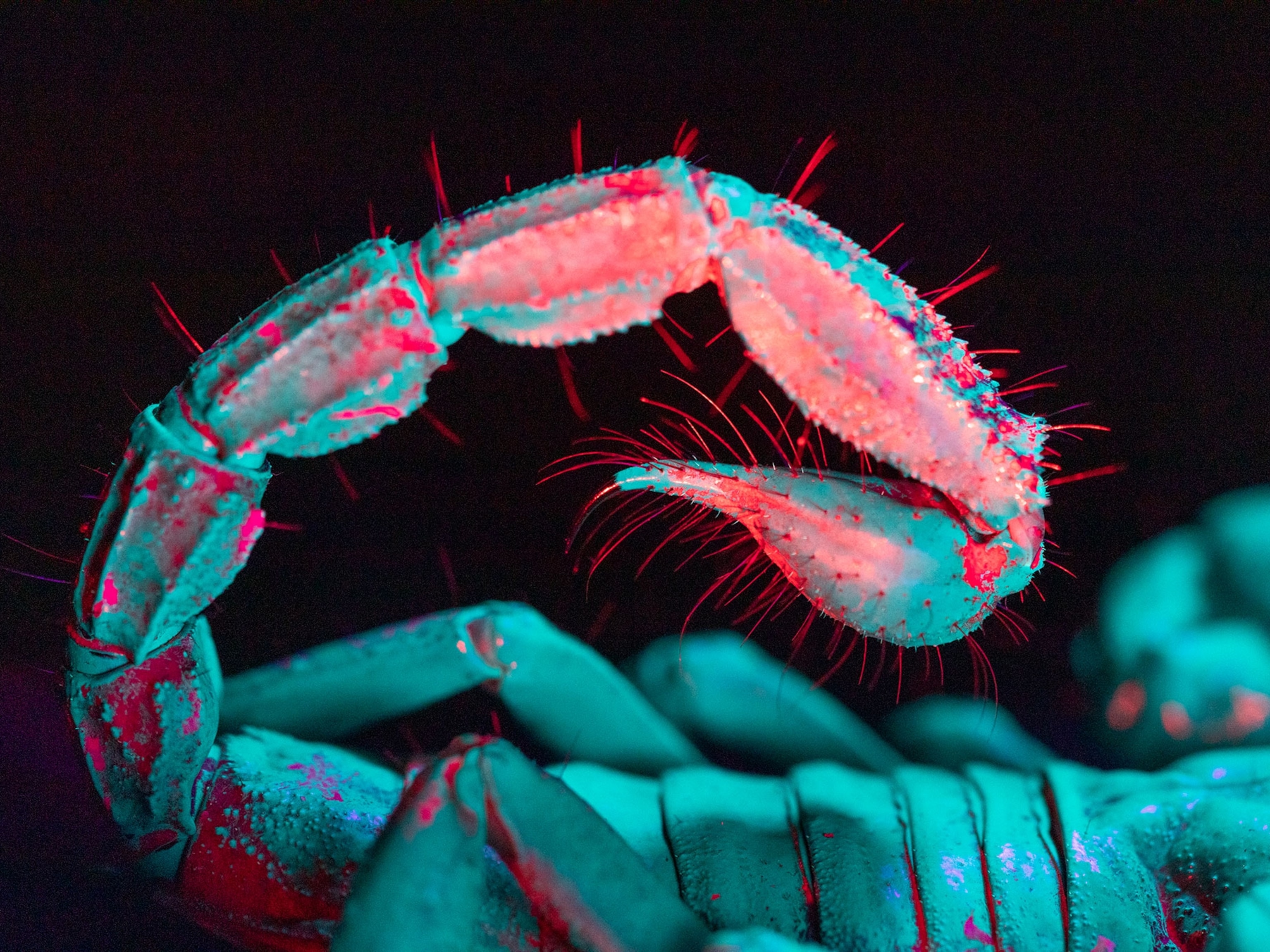Watch Cannibal 'Scorpions' Fight to the Death
A new study reveals the conditions that make these territorial arachnids eat each other.
With long, spiky legs and formidable fangs, tailless whip scorpions look a lot scarier than they are. Neither spider nor scorpion, these arachnids are mostly blind and lack venom.
But the armored predators do engage in fierce territorial battles in which the loser can become dinner.
“It’s like a food resource for them—a prize after the fight,” says Kenneth Chapin, a biologist at the University of California, Davis. (See other cannibalistic animals—including hippos.)
To learn more about whip scorpions' cannibalistic tendencies, Chapin and colleague Sarah Reed-Guy captured several Phrynus longipes specimens in Puerto Rican caves and brought them back to their lab.
The team then set up a series of experiments in which they placed pairs of arachnids of varying sexes, sizes, and ages in a miniature arena and then watched what happened.
In short, they fought. While many scuffles ended without major injury to either party, they were truly no holds barred.
Cannibalism was most likely when a pair of rivals had the same size claws, but one was bigger than the other.
This specific requirement for cannibalism diverges from other species, in which the behavior can occur more often between animals of differing sizes.
“We didn’t expect cannibalism to be really important," Chapin says, "but it ended up happening a lot."
Big and Bad
Tailless whip scorpions have only six working legs; the other two are antennae-like sensors that help maneuver in the dark, for instance picking up vibrations of their prey, such as cockroaches.
“It’s kind of how they see the world, because otherwise they are pretty much blind,” says Chapin, whose study was published recently in the journal Ethology.
In the experiments, the whip scorpions used these sensors to feel the length of their opponents’ open front claws. They also vibrated their pseudo-legs at opponents as a warning before battle. (See "Pictures: 'Bizarre' New Tailless Whip Scorpions Found.")
If an opponent’s claws vastly outsized its own, the smaller arachnid would make itself scarce after a brief skirmish. But an evenly matched set of claws usually meant a clash could run five to 10 minutes—until one conceded defeat and fled, or until one got eaten.
Curiously, some smaller individuals had claws bigger than their bodies, which possibly confused their opponents.
“If you want to advertise how big and bad you are, it pays to lie—to make it look like you’re bigger than you really are,” says Chapin. But “lying is risky, because you might get cannibalized.”
Michael Seiter, a tailless whip scorpion expert at Austria's University of Vienna, say the study is the first to statistically describe the arachnids' conflicts—an improvement upon random observations in the field.
The findings are “pretty cool and an excellent first step in understanding their behavior in natural environments where the specimens interact all the time.”
Love-Hate Relationship
Study leader Chapin was also surprised that tailless whip scorpions were aggressive regardless of the sex or age of their opponent—ie. males matched with females and older animals matched with juveniles displayed the same violence. (Also see "Male Spiders Risk Death By Courting the Wrong Females.")
He’s not sure how males and females get past their fighting to, er, more delicate interactions, but has a theory that the females might be testing the males by fighting with them.
“It could be that all interactions start off with this aggressive way," he says, "and maybe an hour later it changes into courtship."
Follow Joshua Rapp Learn on Twitter.





